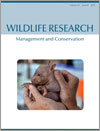Predation, along with competition and disease transmission from feral domestic cats (Felis catus), poses the key threat to many in situ and reintroduced populations of threatened species globally. Feral cats are more challenging to control than pest canids because cats seldom consume poison baits or enter baited traps when live prey are readily available. Novel strategies for sustainably protecting threatened wildlife from feral cats are urgently required. Emerging evidence suggests that once they have successfully killed a challenging species, individual feral cats can systematically eradicate threatened prey populations. Here we propose to exploit this selective predation through three targeted strategies to improve the efficacy of feral cat control. Toxic collars and toxic implants, fitted or inserted during monitoring or reintroduction programs for threatened species, could poison the offending cat before it can effect multiple kills of the target species. A third strategy is informed by evidence that consumption of prey species that are relatively tolerant to natural plant toxins, can be lethal to more sensitive cats. Within key habitats of wildlife species susceptible to cat predation, we advocate increasing the accessibility of these toxins in the food chain, provided negative risks can be mediated. Deliberate poisoning using live and unaffected ‘toxic Trojan prey’ enables ethical feral cat management that takes advantage of cats’ physiological and behavioural predilection for hunting live prey while minimising risks to many non-targets, compared with conventional baiting.
How to translate text using browser tools
25 January 2016
Toxic Trojans: can feral cat predation be mitigated by making their prey poisonous?
J. L. Read,
D. Peacock,
A. F. Wayne,
K. E. Moseby
ACCESS THE FULL ARTICLE

Wildlife Research
Vol. 42 • No. 8
February 2016
Vol. 42 • No. 8
February 2016
collars
Felis catus
implants
plant toxins
predator control
secondary poisoning




